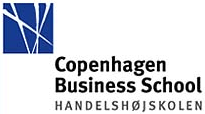No 2004-4: Impact Of It In The Danish Banking Industry, With Specific Illustrations From The Nordea Group And Lån & Spar Bank
Niels Bjørn-Andersen
Additional contact information
Niels Bjørn-Andersen: Department of Informatics, Copenhagen Business School, Postal: Department of Informatics, Copenhagen Business School, Howitzvej 60 , DK-2000 Frederiksberg, Denmark
Abstract: Danish banks have traditionally been in the absolute forefront globally as regards the automation and introduction of IT since the mid 60’ies. But when the e-commerce opportunities emerged in the late 90’ies, the majority of the Danish banks resisted the development. They saw no reason to be the prime movers in cannibalising their own key competitive advantage, the 2.500+ retail-outlets (branches) placed on all the best locations on corners of the shopping streets1. However, once pure Internet banks were introduced in 1998 - 2000, all major banks (and the computing centres servicing the smaller banks) launched massive initiatives to bring the brick-and-mortar banks back into the driver seat using Internet banking. At the end of 2003 more than 30% of all Danish bank customers are using Internet. This development in the banking industry is illustrated using two cases. The first is one of the most ambitious attempts at creating a Nordic based large international financial service company, capable of spearheading the transition to the digital economy - the case of Nordea. This bank is in the midst of various transformation processes across the organisation due to several years of multiple cross boarder mergers and acquisitions, new composition of the group executive management, increasing thrives towards automation of business processes to reduce costs, and different innovations involving a change of the roles of value network partners. The other case is Lån & Spar Bank, which is one of the smaller Danish banks, who have its basic IT services done at a joint computing centre owned with many other smaller banks, but have its own IT development for strategic purposed done in-house in close collaboration with the business units. This bank has been in the forefornt in adopting new IT-solutions. This report consists of an analysis of the background for the development of the Danish banking sectors, the key processes in the Danish banking industry, the environmental and policy actors influencing the development, the e-commerce readiness in the Danish banking sector, the diffusion of e-commerce, and finally the impact on efficiency, industry structure and competition. The main results are that there are more Danish financial institutions having Internet technologies and Internet applications than in the other nine countries in the GEC survey. Furthermore, we suspect that they have had it for a longer period on average than found elsewhere in the sample. However, when we compare the figures in the GEC-survey on the ‘ Use of Internet for the different business processes’, and ‘On-line support’, the number of Danish financial institutions having Internet applications is not higher than in the other countries.
Keywords: None
JEL-codes: O30
27 pages, September 20, 2006
Full text files
6483
- Copenhagen Business School, Department of Informatics
- Ordering Working Papers
- Home page for this series
Questions (including download problems) about the papers in this series should be directed to Lars Nondal ()
Report other problems with accessing this service to Sune Karlsson ().
RePEc:hhs:cbsinf:2004_004This page generated on 2024-09-13 22:14:15.

